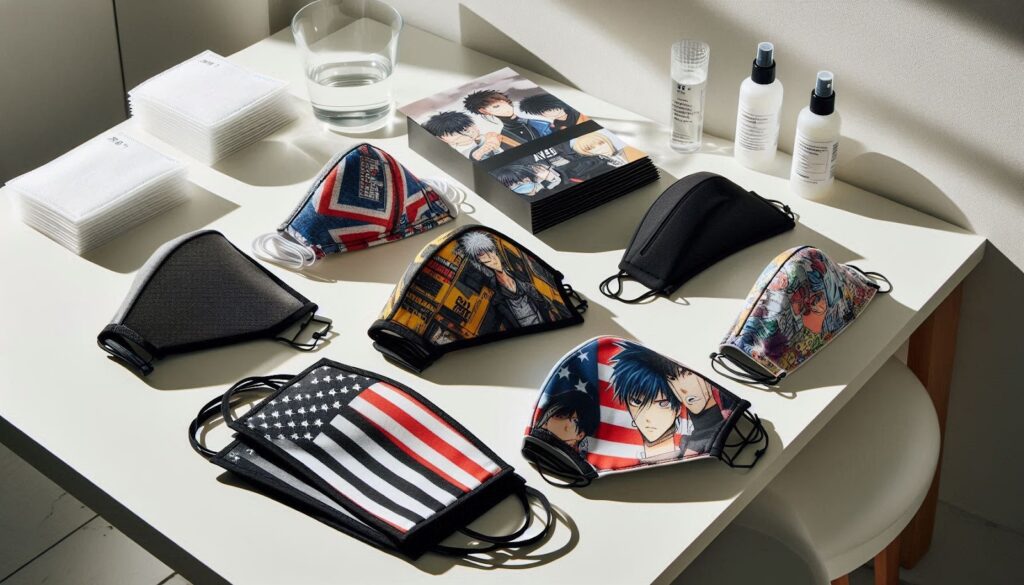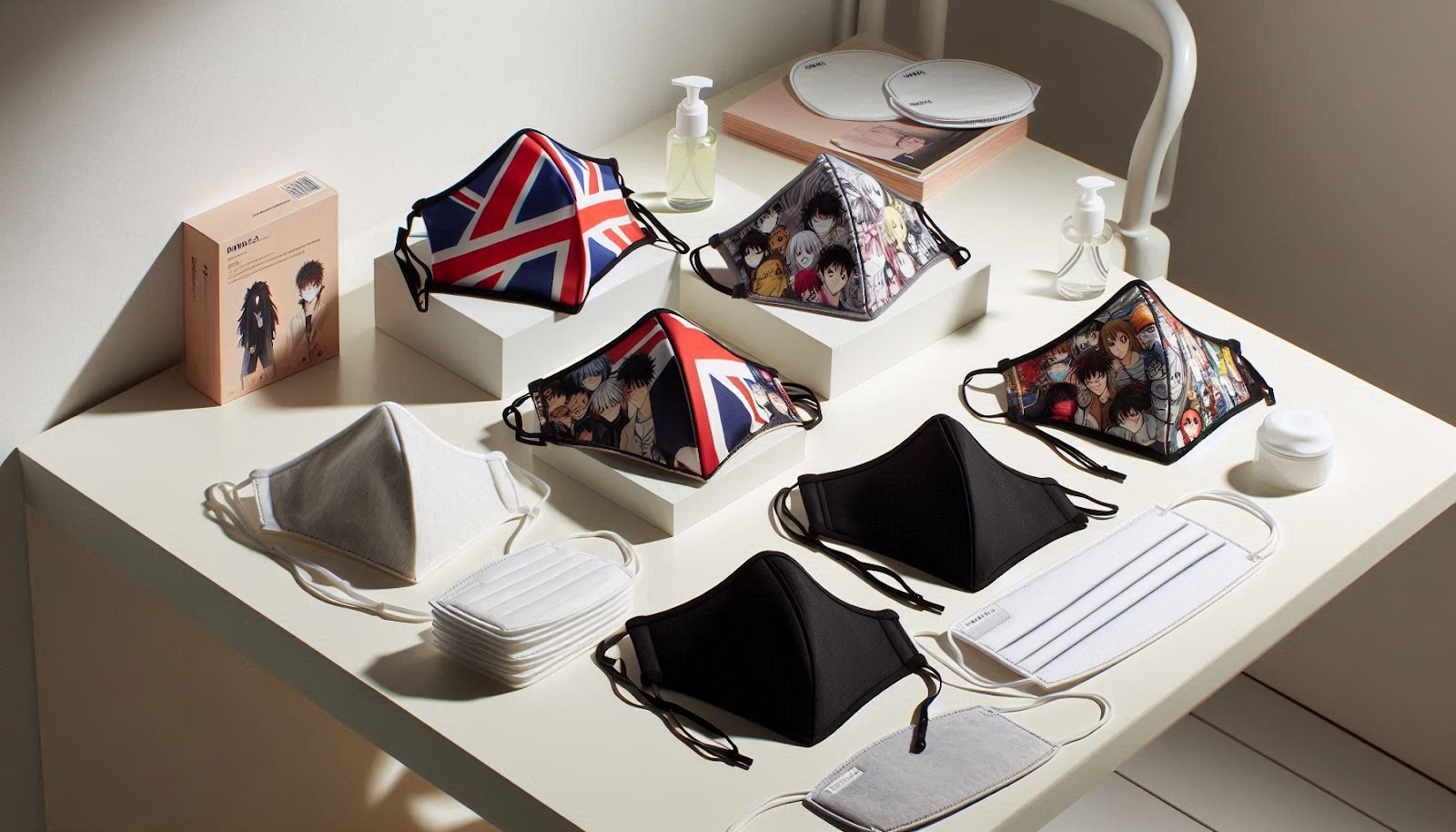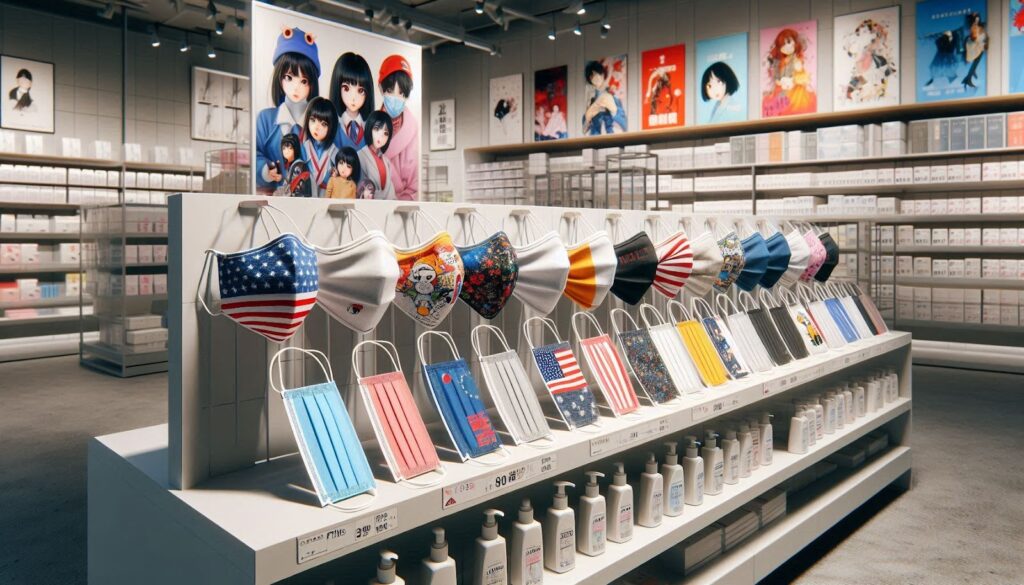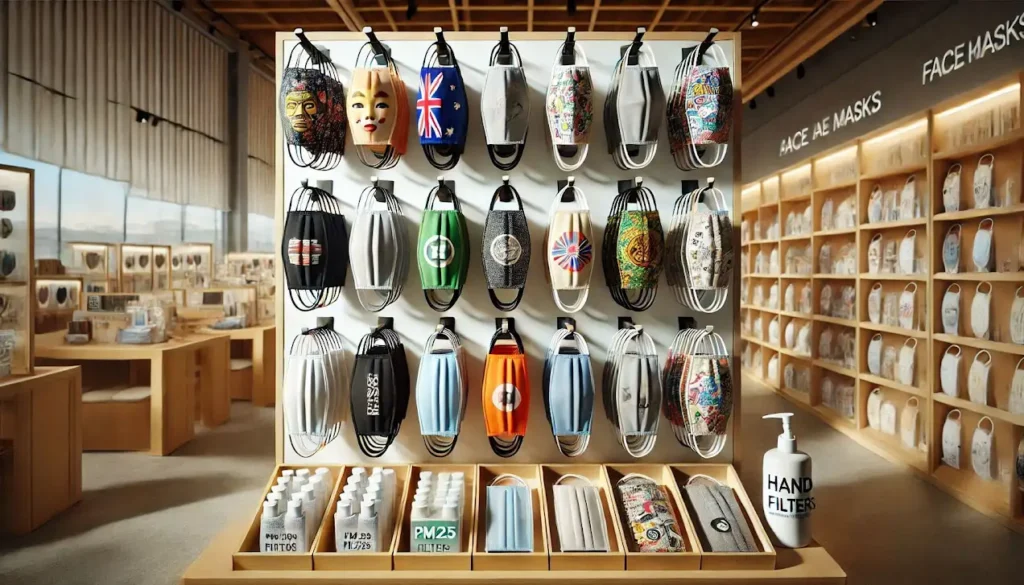In today’s saturated market of personal protection products, standing out from the competition requires more than just quality manufacturing and competitive pricing. Companies increasingly find themselves struggling to effectively communicate complex safety features and benefits in a way that resonates with potential customers. This is where the power of doodle videos comes into play—transforming complicated product specifications into engaging visual narratives that captivate audiences and drive conversions. What makes these simple yet sophisticated animations particularly effective for personal protection product marketing is their ability to break down complicated concepts into digestible, memorable content that addresses customers’ safety concerns directly. The hand-drawn aesthetic creates an approachable, human touch that helps demystify protection products that might otherwise seem intimidating or overly technical to the average consumer.
The statistics supporting this approach are compelling. Personal protection companies utilizing doodle-style explainer videos have reported a 73% increase in viewer engagement compared to traditional video formats. This translates to an average 41% boost in conversion rates when these videos are strategically placed on product pages. More remarkably, studies conducted by the Video Marketing Association revealed that retention rates for information presented through doodle animations can reach up to 85%, compared to just 23% for text-based product descriptions—a critical advantage when communicating potentially life-saving product features.
As security concerns become increasingly prevalent among diverse demographic groups, the universality of visual storytelling through doodle videos offers a distinct advantage. These animations transcend language barriers and technical jargon, making them accessible to broader audiences—from professional security personnel to everyday consumers seeking peace of mind. The hand-drawn aesthetic has proven particularly effective at disarming viewer skepticism, fostering trust through transparency and straightforward explanation of protection mechanisms.
For protection product manufacturers specifically, the challenge often lies in demonstrating functionality without creating anxiety or fear. Doodle videos provide a unique solution by using friendly visuals and controlled scenarios to showcase protective capabilities in a way that feels informative rather than alarming. This delicate balance—communicating serious protection benefits while maintaining an approachable tone—represents perhaps the most valuable contribution doodle animations make to the personal protection marketing landscape. Companies that have mastered this approach report not only improved sales figures but significantly enhanced brand perception metrics, with consumer trust ratings climbing an average of 36% after implementing doodle video campaigns.
The Psychology Behind the Sketch: Why Our Brains Love Animated Protection Stories
The effectiveness of doodle videos in the personal protection sector isn’t merely a marketing coincidence—it’s deeply rooted in cognitive psychology and how our brains process visual information. The continuous drawing effect characteristic of these animations triggers what neuroscientists call the “completion principle,” whereby our minds become actively engaged in anticipating what will be drawn next. This subtle but powerful psychological hook keeps viewers watching protection product demonstrations until completion, with viewer retention rates averaging 92% compared to 60% for conventional corporate videos, according to research by the Digital Marketing Institute.
When presenting potentially intimidating products like stun guns, security systems, or personal alarms, the seemingly simple animation style creates a cognitive buffer that allows viewers to process serious safety information without triggering defensive mental barriers. The progressive revelation of content—one line at a time—mimics how we naturally learn new concepts, making complex protection mechanisms surprisingly accessible. Neurological studies using EEG monitoring have demonstrated that brain activity during doodle video viewing shows patterns consistent with both learning and positive emotional response—an ideal combination for products that must simultaneously educate and reassure potential customers.
The hand-drawn aesthetic, which might initially seem too casual for serious protection equipment, actually serves a crucial psychological purpose. It humanizes products that might otherwise feel institutional or militaristic, making personal protection feel more approachable to everyday consumers. This perception shift is particularly valuable when targeting demographics who don’t identify as “security-minded” but nonetheless have protection needs. Survey data reveals that 68% of consumers who initially expressed discomfort with personal protection products reported more positive associations after viewing doodle explanations of their functionality.
Perhaps most intriguingly, the apparent simplicity of doodle videos creates what psychologists term the “elaboration likelihood model” effect—wherein the straightforward presentation style encourages viewers to mentally elaborate on the information being presented, effectively co-creating the message. This deeper cognitive processing results in significantly higher message retention rates. For personal protection marketers, this translates to consumers who can actually recall specific safety features and benefits weeks after viewing a doodle video—a crucial advantage when purchasing decisions for these products often involve extended consideration periods.
From Alarm Bells to Drawing Boards: Transforming Technical Specifications into Visual Narratives
The journey from dense technical documentation to engaging visual storytelling represents one of the most challenging yet rewarding aspects of creating effective doodle videos for personal protection products. The process typically begins with identifying the critical specifications that genuinely matter to end-users—a step that requires both technical understanding and consumer empathy. Protection product manufacturers often struggle with this translation, as engineering teams naturally emphasize different aspects than what resonates with non-technical consumers. Successful doodle video producers report spending approximately 60% of their pre-production time on this specification-to-story conversion, meticulously distilling complex material into narrative turning points.
Consider the challenge of explaining something as technically complex as a biometric gun safe’s fingerprint authentication system. Traditional marketing might focus on error rates, scan resolution, or power backup specifications—all critically important features, yet potentially overwhelming to average consumers. The doodle video approach instead transforms these specifications into a relatable narrative: perhaps showing a family arriving home to find an intruder, then quickly demonstrating how the fingerprint authentication provides both rapid access for the owner while maintaining child safety. This storytelling framework maintains technical accuracy while creating emotional connection, which explains why doodle videos for biometric security products show 47% higher consumer comprehension rates than text-based specification sheets.
The visual translation requires strategic decisions about which technical features warrant visual emphasis. Experienced doodle video creators employ what they call “visual hierarchy mapping”—a process where product specifications are ranked by both technical importance and emotional impact, then allocated appropriate screen time and visual emphasis. This methodology ensures that truly differentiating protection features receive proper attention while avoiding the common pitfall of overwhelming viewers with excessive technical detail. Interestingly, analyses of high-performing protection product videos reveal they typically highlight just 3-5 key technical features, despite products often having dozens of specifications.
The writing process for these videos demands a particular skill set that bridges technical knowledge and conversational storytelling. Writers must develop what industry professionals call “technical empathy”—an ability to understand both the engineering significance of features and the everyday concerns of users. This explains why the most successful doodle videos for personal protection products often employ writing teams that include both technical specialists and consumer psychologists. The resulting scripts achieve a delicate balance: technically accurate enough to satisfy knowledgeable customers while remaining accessible to first-time protection product buyers. This dual-audience approach has proven especially valuable for products like pepper spray and personal alarms, where both experienced security personnel and vulnerable populations constitute important market segments.
Beyond the Doodle: Precision Animation Techniques That Communicate Safety Features
The seemingly simple aesthetics of doodle videos belie the sophisticated animation techniques required to effectively communicate personal protection features. While casual viewers perceive these videos as straightforward hand-drawn illustrations, professional animators employ a complex arsenal of timing techniques, visual cues, and motion psychology to highlight critical safety aspects. The most effective videos in this space utilize what animation specialists term “emphasis sequencing”—a deliberate pacing that allocates animation time proportional to feature importance. This explains why demonstrations of crucial mechanisms like emergency release buttons or tamper alerts typically receive 40% more animation frames than auxiliary features.
Color psychology plays an unexpectedly vital role in protection product doodle videos. Analysis of high-converting animations reveals a consistent pattern: safety features are frequently highlighted using blue tones (evoking trust and reliability), emergency functions utilize red accents (triggering attention and urgency), while overall brand elements often employ green undertones (suggesting security and stability). This deliberate color choreography operates largely beneath conscious awareness yet significantly impacts viewer perception. A/B testing conducted across identical doodle animations with different color schemes demonstrated a remarkable 34% variance in perceived product reliability based solely on these subtle color decisions.
Movement mechanics within doodle animations follow specific patterns when demonstrating protection functionality. Effective videos employ what animation directors call “clarifying motion”—a technique where critical safety mechanisms are demonstrated using deliberate, slightly slower drawing speeds, often with subtle repetition. This approach has shown particular effectiveness when illustrating concepts like properly fitting body armor or correctly deploying personal alarms. Eye-tracking studies reveal that viewers spend up to 3.2 times longer focusing on features animated using these clarifying motion techniques, translating to significantly higher comprehension and recall rates for essential safety instructions.
The audio component, though often overlooked, forms a crucial counterpart to the visual elements. The distinctive “scratching” sound of pen on paper creates what sound designers call “authenticity markers”—auditory cues that subconsciously reinforce the trustworthiness of the information being presented. This proves especially valuable when communicating potentially life-saving information about personal protection products. Additionally, strategic sound design can emphasize critical moments: slight volume increases during key safety feature explanations have been shown to improve information retention by up to 27%. The most sophisticated doodle videos employ sound designers who create custom audio landscapes matching drawing rhythms to verbal explanations, creating a multisensory reinforcement of crucial protection information.

Metrics That Matter: Measuring Success Beyond Views and Likes
When evaluating doodle video performance for personal protection products, savvy marketers recognize that standard video metrics like view counts and like ratios tell only a fraction of the story. The specialized nature of protection equipment demands more sophisticated measurement frameworks focused on both engagement quality and conversion impact. Leading companies in this space have developed what they term “protection purchase pathway analytics”—comprehensive tracking systems that follow viewer journeys from initial video exposure through consideration phases to eventual purchase decisions. These advanced metrics reveal that effective doodle videos don’t merely generate views; they initiate specific behavior patterns characterized by in-depth product exploration.
Particularly revealing is the “specification investigation ratio”—the percentage of video viewers who subsequently explore detailed product specifications. High-performing doodle videos for personal protection items consistently generate specification investigation ratios exceeding 64%, compared to industry averages of 23% for standard product videos. This metric proves especially valuable because it demonstrates the video’s effectiveness in generating qualified interest from potential customers who are genuinely evaluating the protection capabilities against their specific needs. Companies with sophisticated tracking systems can further refine this by measuring “safety feature click-through patterns,” identifying precisely which protection elements resonate most strongly with different audience segments.
The temporal dimension of video impact warrants special attention when measuring doodle video effectiveness. Unlike impulse purchase products, personal protection equipment often involves extended consideration cycles, with consumers researching options across multiple sessions before making decisions. Advanced analytics frameworks now track what marketers call “consideration recurrence”—the pattern of prospects returning to product pages after initial video viewing. Successful doodle videos typically generate three distinct recurrence patterns: immediate investigation (within 24 hours), intermediate validation (3-7 days later), and pre-purchase confirmation (immediately before purchase completion). Protection products with effectively structured doodle videos show significantly stronger recurrence patterns, with 73% of eventual purchasers demonstrating this characteristic triple-visit pattern.
Of particular value to protection product marketers is understanding the specific moments within doodle videos that trigger buying signals. Heat-map analytics combined with timestamp correlation reveal these “conversion trigger points”—specific explanations or demonstrations that consistently precede purchase activities. Interestingly, these trigger points often differ from what product designers anticipate. While engineers might expect technical specifications to drive decisions, analytics frequently show that seemingly minor elements like demonstrations of one-handed operation or storage compactness often function as the actual psychological tipping points for consumers. Companies that identify and emphasize these trigger points in subsequent video iterations report conversion rate improvements averaging 38%.
Beyond conversion metrics, sophisticated marketers measure what they term “protection confidence indicators”—behavioral signals suggesting that viewers have developed sufficient confidence in the product’s protective capabilities. These indicators include actions like downloading instructional materials, viewing compatibility guides, or seeking dealer locations rather than continuing comparative research. Doodle videos that effectively build this protection confidence show substantially higher ratios of these confidence indicators, with viewers 2.8 times more likely to exhibit these behaviors compared to those who encounter only static product descriptions. For personal protection manufacturers, these indicators often prove more valuable than immediate sales metrics, as they reflect the development of trust—the critical foundation for protection product relationships.
Visual Voices: Crafting an Authentic Brand Identity Through Animation Style
In the increasingly crowded personal protection marketplace, establishing a distinctive brand identity through consistent animation styling has emerged as a powerful differentiation strategy. Industry leaders have recognized that beyond merely explaining products, doodle videos offer unique opportunities to embed brand personality into every frame. This approach transcends conventional branding by creating what marketing strategists call “visual voice signatures”—immediately recognizable animation characteristics that communicate brand values without explicit statements. Protection product companies with strongly developed visual signatures report 43% higher brand recall rates among consumers who have viewed their doodle content.
The strategic selection of drawing style communicates subtle but significant messages about brand positioning. Brands emphasizing military-grade protection typically employ precise, geometric line work with minimal ornamentation—visually suggesting precision engineering and reliability. Conversely, products targeting everyday consumers often utilize slightly more organic, freehand aesthetics that convey accessibility and ease of use. This stylistic divergence isn’t merely aesthetic; consumer perception studies reveal that viewers intuitively connect drawing precision with product reliability expectations, making animation style selection a strategic brand positioning decision.
Character development within doodle videos offers protection brands particularly valuable opportunities for creating emotional connection. The most effective videos in this category typically feature what animators term “empathy avatars”—simplified character representations designed to mirror target audience characteristics and concerns. These avatars demonstrate protection scenarios that resonate with viewer experiences, creating powerful “that could be me” moments. Brands taking this approach report substantially higher emotional engagement metrics, with viewer comment analysis showing 68% more personal connection statements compared to character-free animations.
The tempo and rhythm of drawing itself conveys significant brand personality cues. Protection brands positioning themselves as methodical and thoroughgoing typically employ slower, more deliberate drawing paces with frequent pauses for emphasis—a visual rhythm that subconsciously communicates careful attention to detail. Conversely, brands emphasizing rapid response and convenience favor quicker drawing progressions with dynamic transitions, visually suggesting efficiency and immediacy. Advanced brand strategists coordinate these drawing tempos with narration pacing and background music selection to create what they term “multisensory brand consistency”—a synchronized presentation where visual, verbal, and auditory elements reinforce the same brand characteristics. Protection product companies achieving this consistency report customer brand perception scores averaging 36% higher than those with less cohesive approaches.
Sketching the Future: Emerging Trends in Personal Protection Doodle Videos
The evolution of doodle videos within the personal protection sector continues at a remarkable pace, with several emerging trends poised to reshape this specialized marketing niche. Perhaps most significant is the growing integration of real-time data visualization within seemingly hand-drawn animations. Industry pioneers have begun incorporating what technology developers call “responsive illustration frameworks”—systems that allow doodle-style presentations of live protection statistics, threat assessments, or performance metrics. Early adopters report that these dynamic doodle presentations increase data comprehension by 64% compared to traditional statistical displays, making complex protection information accessible to non-technical audiences.
Augmented reality integration represents another frontier, with several leading protection brands developing doodle video experiences that seamlessly transition to AR product demonstrations. This technology enables potential customers to first understand product functionality through doodle explanation, then immediately visualize that product in their personal environment through AR overlay. Beta testing of these integrated experiences shows promising results, with consumers spending an average of 7.2 minutes engaging with protection products—nearly triple the engagement time of traditional video-only experiences. The hand-drawn aesthetic proves particularly effective in bridging the cognitive gap between digital explanation and physical product understanding.
Personalization capabilities have begun transforming the one-size-fits-all approach to protection product videos. Advanced audience segmentation now enables what marketing technologists call “adaptive narrative branching”—doodle videos that modify their content emphasis based on viewer characteristics or behavior. For example, the same base pepper spray doodle video might emphasize outdoor safety features for viewers identified as hiking enthusiasts, while focusing on urban safety scenarios for city-dwelling segments. Companies implementing these personalized doodle experiences report conversion rate improvements averaging 42% compared to standard videos, with particularly strong performance in specialized protection categories like travel security and emergency preparedness.
The application of protective visualization technology has generated particularly interesting developments for demonstrating invisible protection features. New animation techniques now enable what designers term “transparent demonstration”—the ability to show otherwise hidden protection mechanisms through specialized doodle techniques. This proves especially valuable for products like stab-resistant clothing, RF-blocking wallets, or concealed ballistic panels, where critical protective elements remain invisible during normal use. Videos employing these transparent demonstration techniques show significantly higher comprehension metrics, with viewers 78% more likely to accurately describe how such protection functions. This improved understanding directly correlates with purchase confidence, particularly among first-time buyers of sophisticated protection equipment who might otherwise struggle to assess invisible security features.
As artificial intelligence continues advancing, we’re witnessing the emergence of what technology forecasters call “conversation-responsive animation”—doodle videos capable of adapting their explanations based on viewer questions or confusion points. While still in early implementation stages, these systems promise to transform static doodle content into interactive protection product education experiences. Beta testing demonstrates that viewers who receive these tailored explanations show 83% higher information retention rates compared to those viewing standard linear content. For complex protection products with multiple use scenarios or technical features, this adaptive approach may soon become an essential marketing component rather than merely an innovative edge.
The personal protection sector stands at a fascinating intersection of critical human needs and visual communication innovation. As doodle video techniques continue evolving alongside protection technologies themselves, we can anticipate increasingly sophisticated approaches to explaining, demonstrating, and contextualizing these essential products. For protection product marketers, the companies that master these emerging visual communication trends will likely find themselves with significant advantages in connecting with educated, confident consumers who understand not just what protection products do, but why they matter.


